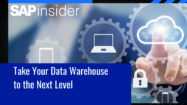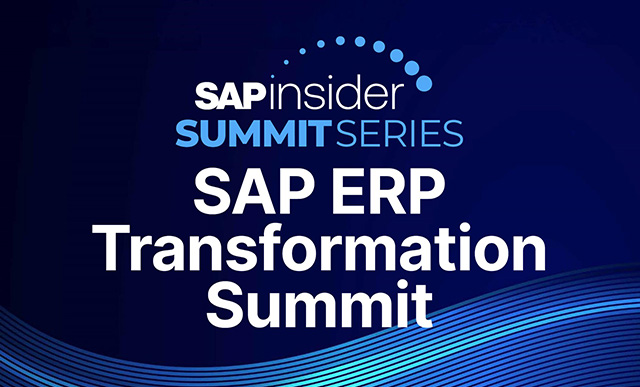SAP Asset Analytics
Filter By
Browse By
- SAP Analytics and AI
- SAP Application Development and Integration
- All SAP Application Development and Integration
- SAP ABAP
- SAP ABAP Development Tools
- SAP ABAP Test Cockpit
- SAP API Management
- SAP BAPI
- SAP Basis
- SAP BRF
- SAP Business Application Studio
- SAP CMS
- SAP Design Studio
- SAP Development Tools
- SAP DevOps
- SAP EAI
- SAP EDI
- SAP Extension Suite
- SAP Fiori
- SAP Fiori Elements
- SAP Integration Suite
- SAP Low Code Application Development
- SAP Low Code Automation
- SAP Netweaver
- SAP Release Management
- SAP UI5
- SAP Web Application Server
- SAP Web IDE
- SAP Business Process Management
- SAP Center of Excellence
- SAP CIO
- SAP Customer Experience
- SAP Data and Data Management
- All SAP Data and Data Management
- SAP BW
- SAP BW/4HANA
- SAP Crystal Reports
- SAP Data Archiving
- SAP Data Center
- SAP Data Governance
- SAP Data Integration
- SAP Data Migration
- SAP Data Quality
- SAP Data Services
- SAP Data Strategy
- SAP Data Visualization
- SAP Data Warehouse Cloud
- SAP DMS
- SAP Document Control
- SAP EIM
- SAP ETL
- SAP ETL Tools
- SAP HANA
- SAP HANA Administration
- SAP HANA Deployment Infrastructure
- SAP HANA Studio
- SAP Master Data
- SAP Master Data Governance
- SAP MDM
- SAP Enterprise Architect
- SAP Enterprise Asset Management
- SAP ERP
- SAP Finance
- All SAP Finance
- SAP Accounting
- SAP AR AP
- SAP Asset Accounting
- SAP Billing Systems
- SAP BPC
- SAP BRIM
- SAP Cash Management
- SAP Central Finance
- SAP Controlling
- SAP COPA
- SAP Cost Center Accounting
- SAP Currency Risk
- SAP e-invoicing
- SAP FICO
- SAP Finance Automation
- SAP Advanced Financial Closing
- SAP Financial Consolidation
- SAP Financial Planning
- SAP FX Risk
- SAP General Ledger
- SAP Global Tax Management
- SAP Hyperion
- SAP Order to Cash
- SAP Payment Processing
- SAP Profitability Analysis
- SAP Rebate Management
- SAP S/4HANA Finance
- SAP SWIFT Compliance
- SAP Treasury Management
- SAP Universal Journal
- SAP Governance Risk and Compliance
- SAP Human Capital Management
- SAP Intelligent Technologies
- SAP Platform and Technology
- All SAP Platform and Technology
- SAP Business Technology Platform
- SAP Cloud
- SAP Cloud Connector
- SAP Cloud Integration Platform
- SAP Cloud Migration
- SAP Cloud Platform
- SAP Cloud Providers
- SAP Cloud Strategy
- SAP Digital Signature
- SAP Container Platform
- SAP HANA Enterprise Cloud
- SAP Digital Asset Management
- SAP Smart Forms
- SAP HEC
- SAP Digital Integration Hub
- SAP Hyperscalers
- SAP Infrastructure
- SAP Messaging
- SAP Quality and Testing
- SAP Security
- SAP Spend Management
- SAP Supply Chain Management
- All SAP Supply Chain Management
- SAP APO
- SAP Asset Management
- SAP Business Network
- SAP Digital Manufacturing Cloud
- SAP Digital Twin
- SAP EWM
- SAP IBP
- SAP Inventory Management
- SAP Label Printing
- SAP Logistics
- SAP Manufacturing
- SAP Manufacturing Automation
- SAP MES
- SAP MII
- SAP MM
- SAP MRO
- SAP MRP
- SAP Order Management
- SAP Plant Maintenance
- SAP PLM
- SAP Production Planning
- SAP S&OP
- SAP SD
- SAP SPM
- SAP Supply Chain Planning
- SAP Track and Trace
- SAP Transportation Management
- SAP System Administration
Predictive Asset Analytics is the use of statistical modeling, data mining techniques, machine learning, and digital twin technologies to make predictions about future outcomes. A cloud deployment or cloud native solution is required to gain insights from sensor data and engineering simulations. With advances in data storage and loT sensor technology organizations can learn about each asset’s individual performance to predict asset productivity.
Improving reliability, performance, and safety are top priorities for organizations today. But organizations are also focusing on controlling costs and maximizing value from existing investments by supporting predictive maintenance and service. Predictive asset analytics is a solution for end-to-end asset management to provide early warning signals and give a diagnosis of equipment long before failure.
Key Capabilities of SAP Predictive Asset Insights include:
- A 360 view of assets: A holistic view of the asset model with a single predictive tool increasing visibility into master, transactional, performance, and loT data sensor data.
- Intuitive and scalable machine learning: Ability to detect abnormalities and predict failure without data scientist intervention, extending the intelligence of predictive maintenance by machine learning capabilities.
- Advanced analytics: Gain insights into failure modes and leading indicators by benefiting from purpose-made analytical capabilities augmented with predictive asset intelligence.
- Digital twin simulations: Apply ANSYS digital twin technology to analyze assets in action and over time in a live environment where engineering simulations support virtual sensors.
Predictive Asset Analytics is the use of statistical modeling, data mining techniques, machine learning, and digital twin technologies to make predictions about future outcomes. A cloud deployment or cloud native solution is required to gain insights from sensor data and engineering simulations. With advances in data storage and loT sensor technology organizations can learn about each asset’s individual performance to predict asset productivity.
Improving reliability, performance, and safety are top priorities for organizations today. But organizations are also focusing on controlling costs and maximizing value from existing investments by supporting predictive maintenance and service. Predictive asset analytics is a solution for end-to-end asset management to provide early warning signals and give a diagnosis of equipment long before failure.
Key Capabilities of SAP Predictive Asset Insights include:
- A 360 view of assets: A holistic view of the asset model with a single predictive tool increasing visibility into master, transactional, performance, and loT data sensor data.
- Intuitive and scalable machine learning: Ability to detect abnormalities and predict failure without data scientist intervention, extending the intelligence of predictive maintenance by machine learning capabilities.
- Advanced analytics: Gain insights into failure modes and leading indicators by benefiting from purpose-made analytical capabilities augmented with predictive asset intelligence.
- Digital twin simulations: Apply ANSYS digital twin technology to analyze assets in action and over time in a live environment where engineering simulations support virtual sensors.
Benefits of SAP Predictive Asset Insights are:
- Improves service effectiveness
- Lowers maintenance costs
- Increases asset availability
Vendors partners for predictive asset analytics are: SAP , PWC, KCT
Key Considerations for SAPinsiders are:
- Advanced Analytics and Performance Intelligence. In the recent state of the market for process automation, SAPinsiders indicated that intelligent automation and process intelligence are key capabilities they are planning to build in the next two years. This analyst insight explores some critical aspects to be aware of on your path to develop these capabilities.
- Achieve Business Clarity with Process Intelligence. Process intelligence provides an understanding of where process deficiencies exist and where leverage opportunities reside. SAPinsider sat down with Shoeb Javed, Chief Strategy and Product Officer for software testing firm Worksoft Inc., to discuss the latest Achieve Business Clarity with Process Intelligence process intelligence trends.
- Digital twins are on the Rise to Mitigate Risk. Companies are searching for greater efficiencies to improve operational efficiencies and be more resilient. In this analyst insight learn what digital twins are, how they work, how they have evolved, and benefits that they can bring to your organization. Optimization is where digital twins excel to test contingency plans and build resilience.
858 results
-

- SAP Asset Management
 Premium
Premium
Closed-Loop Asset Management with SAP: Increase Uptime, Reduce Cost, and Improve Asset Performance by Learning from Work Execution
Understand how SAP has re-engineered its Intelligent Asset Management solutions to enable a closed-loop process, which directly links your maintenance strategy from asset criticality assessment with maintenance planning and work execution – and enables you to apply learnings from your work execution to improve your asset strategies. Membership Required You must be a member to…
-

 Premium
Premium
How Proposed Lease Accounting Changes Will Affect Your SAP System (And What You Can Do About It)
Reading time: 6 mins
ManagementSAPexperts/FinancialsWhile the switch to International Financial Reporting Standards (IFRS) is getting all the attention, the two boards that govern US and international accounting rules are mulling another change that could have a big impact on businesses that lease equipment. If passed, the proposal could add significant complexity to the way leases are accounted for at...…
-

 Premium
Premium
Maintain an Asset Hierarchy Using the Plant Information Catalog in SAP MII
Reading time: 34 mins
Learn how to create, maintain, and consume a Plant Information Catalog (PIC) hierarchy in SAP Manufacturing Integration and Intelligence (SAP MII). Discover how to integrate shop floor data and enterprise data from SAP ERP in the PIC. Key Concept Plant Information Catalog (PIC) is a framework provided by SAP Manufacturing Integration and Intelligence (SAP MII)...…
-
-

- SAP Business Application Studio
 Premium
Premium
Integrate Your SAP Data into SAP BusinessObjects Planning and Consolidation
Reading time: 26 mins
The purpose and the semantics of transaction level data in SAP ERP can differ significantly from what business users expect to see in SAP BusinessObjects Planning and Consolidation when they perform their forecasting and consolidation activities. Taking these differences into account when integrating data into SAP BusinessObjects Planning and Consolidation is often more complex than...…
-

Take Your Data Warehouse to the Next Level
Reading time: 6 mins
To make good use of all the data streaming in from internal and external sources, companies must be able to organize and store that data in a way that enables optimal analysis, so that they can make the right business decisions. This is where data warehouses come in, which serve as a central repository of…
-

 Premium
Premium
mySAP CRM Analytics Harnesses SAP NetWeaver BI Analytical Capabilities
Reading time: 25 mins
mySAP CRM Analytics, a group of tools offered with mySAP CRM and SAP NetWeaver BI, can help you optimize your company’s customer data. Learn about the mySAP CRM extraction mechanism and delivered analysis tools you can use with your data. Then, explore the standard tool sets available, including customer analytics, product analytics, sales and service...…
-

Live from SAPinsider Studio: Ty Miller of SAP on Cloud for Analytics
Ty Miller, Vice President, Product Management, SAP Analytics, joins SAPinsider Studio at the 2016 BI-HANA-IoT event to discuss SAP Cloud for Analytics. Topics of this discussion include the Cloud for Analytics roadmap for predictive and exploratory analytics, Cloud for Analytics for Planning, and what SAP’s acquisition of Roambi means for Cloud for Analytics. This is...…
-
-

How SAP Analytics Cloud (SAC) aligns with evolving trends in data and analytics
Reading time: 4 mins
by Kumar Singh, Research Director, Automation & Analytics, SAPinsider With data rapidly becoming the new currency, we have recently seen an explosion in the number of data and analytics tools in the marketplace. Advances in computing technology, availability of open source programming tools and the exponential increase in the data that organizations generate and...…
-

 Premium
Premium
Uncover New Insight into Your Customers with mySAP CRM Analytics
Reading time: 27 mins
Find out how mySAP CRM Analytics, a group of tools offered with mySAP CRM 2005 and SAP NetWeaver Business Intelligence to help you optimize your customer data. Learn about the mySAP CRM extraction mechanism and cross-application analysis tools you can use with your data. Then, explore the standard tool sets available, including customer analytics, product...…
-

Where Splunk’s Asset and Risk Intelligence can help in an SAP environment
Reading time: 1 mins
Splunk’s Asset and Risk Intelligence tool helps modern SAP enterprises manage and secure a complex array of systems and IoT devices by providing continuous asset tracking and compliance insights, thereby enhancing cybersecurity and operational effectiveness.
Become a Member
Unlimited access to thousands of resources for SAP-specific expertise that can only be found here.
Become a Partner
Access exclusive SAP insights, expert marketing strategies, and high-value services including research reports, webinars, and buyers' guides, all designed to boost your campaign ROI by up to 50% within the SAP ecosystem.
Upcoming Events
-

SAPinsider ERP Transformation Summit
October 22 - 23, 2025
New Orleans, Louisiana
United States
View Event
Related Vendors
Your request has been successfully sent

